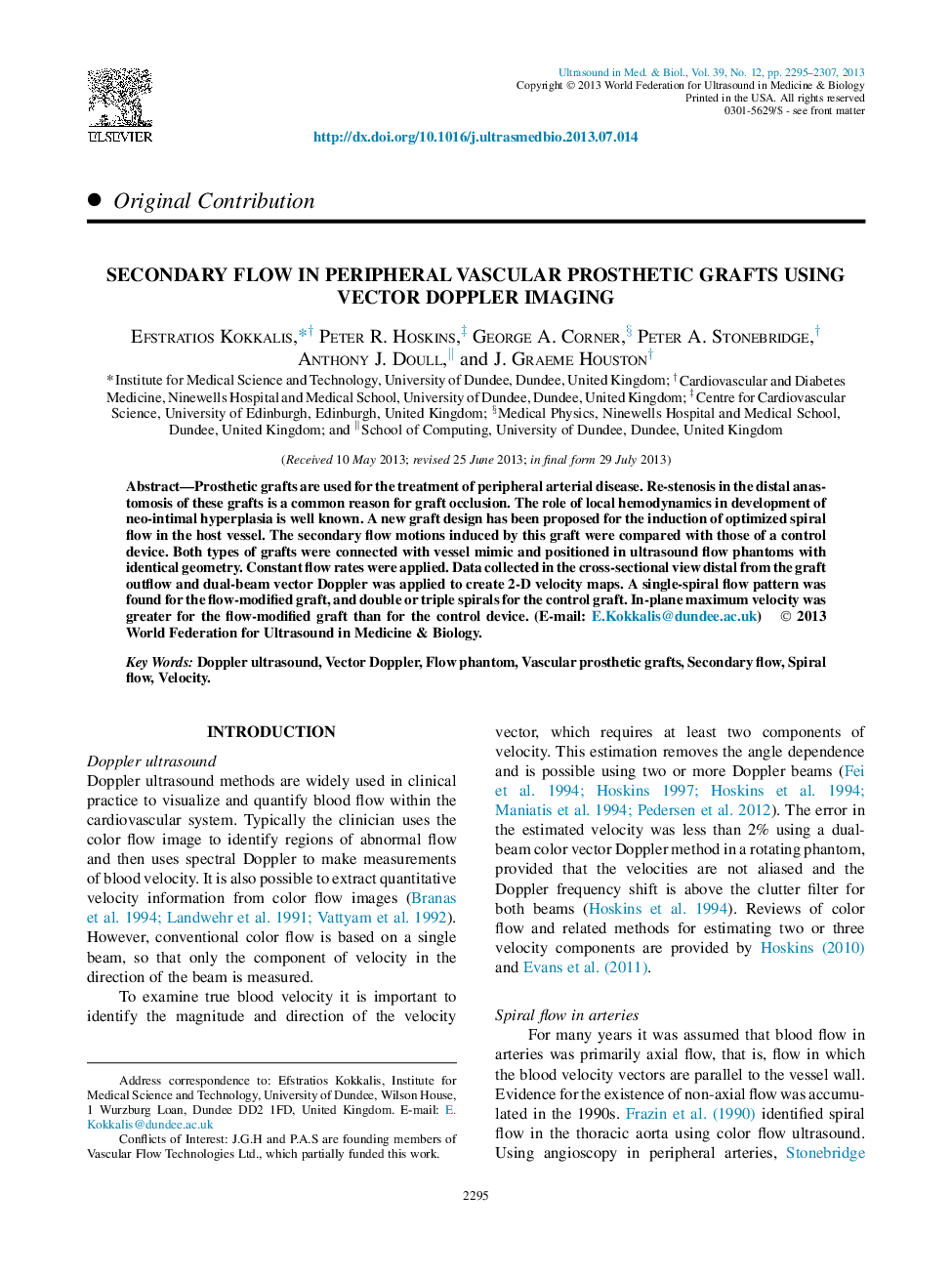| Article ID | Journal | Published Year | Pages | File Type |
|---|---|---|---|---|
| 1760511 | Ultrasound in Medicine & Biology | 2013 | 13 Pages |
Abstract
Prosthetic grafts are used for the treatment of peripheral arterial disease. Re-stenosis in the distal anastomosis of these grafts is a common reason for graft occlusion. The role of local hemodynamics in development of neo-intimal hyperplasia is well known. A new graft design has been proposed for the induction of optimized spiral flow in the host vessel. The secondary flow motions induced by this graft were compared with those of a control device. Both types of grafts were connected with vessel mimic and positioned in ultrasound flow phantoms with identical geometry. Constant flow rates were applied. Data collected in the cross-sectional view distal from the graft outflow and dual-beam vector Doppler was applied to create 2-D velocity maps. A single-spiral flow pattern was found for the flow-modified graft, and double or triple spirals for the control graft. In-plane maximum velocity was greater for the flow-modified graft than for the control device.
Related Topics
Physical Sciences and Engineering
Physics and Astronomy
Acoustics and Ultrasonics
Authors
Efstratios Kokkalis, Peter R. Hoskins, George A. Corner, Peter A. Stonebridge, Anthony J. Doull, J. Graeme Houston,
